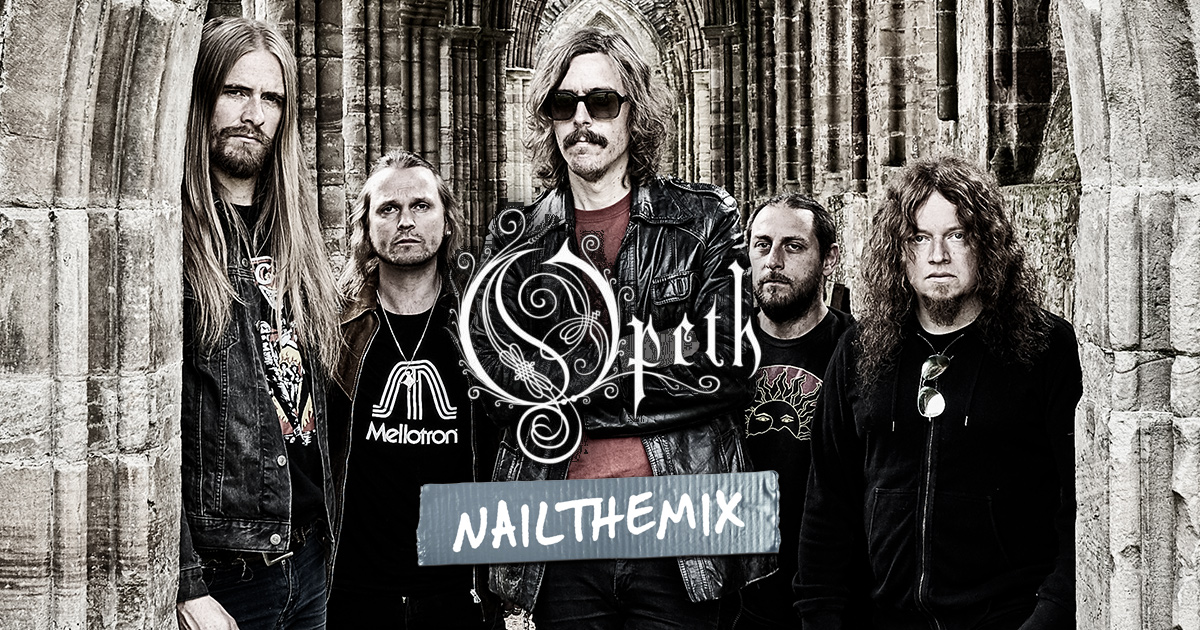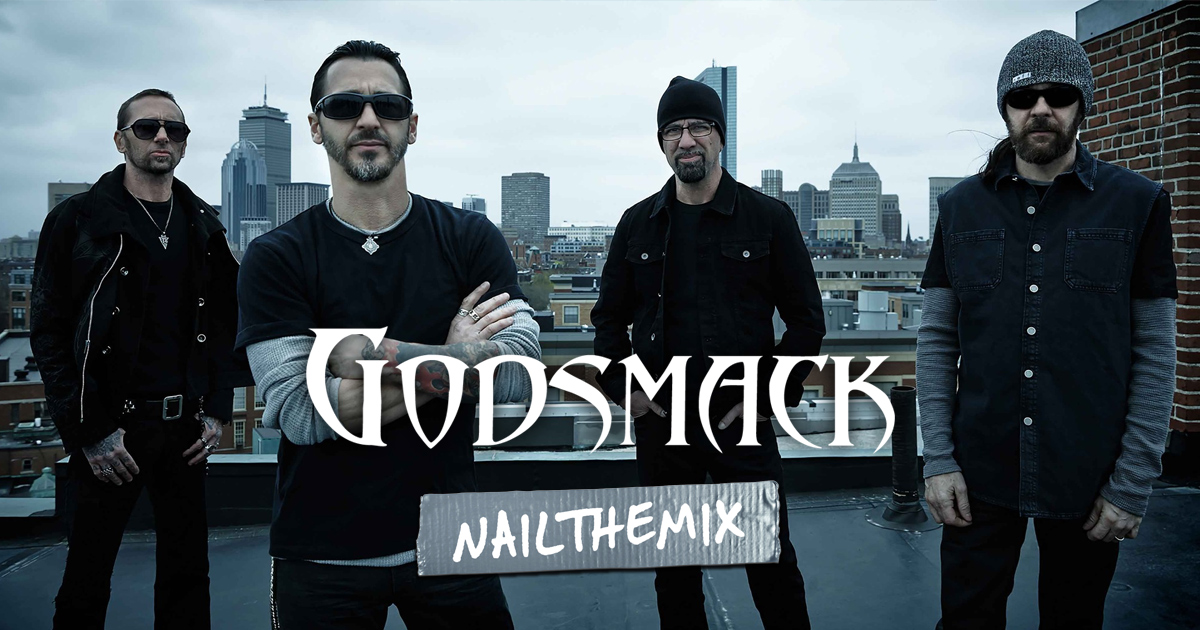
What Makes Opeth Mixes Sound So Damn Good?
Nail The Mix Staff
When you listen to classic Opeth songs from albums like Blackwater Park or Ghost Reveries, there’s a distinct character that stands apart from much of modern metal. While today’s productions are often incredibly polished, powerful, and tight—sometimes to the point of sounding robotic—Opeth’s records breathe. They have a raw, organic feel that captures the emotion and musicianship of the band in a way that’s timeless.
So, how did they achieve that sound?
It’s not about magic or secret formulas. It’s about a production philosophy that prioritizes performance and musical dynamics over sterile perfection. In a world of grid-locked drums and hyper-compressed guitars, dissecting the sound of Opeth songs offers a masterclass in creating powerful, yet living, metal mixes. Let’s break down some of the key elements.
The Organic Drum Sound: A Lesson in Dynamics
One of the most significant differences between an Opeth record and many modern metal albums is the drum sound. The current standard often involves heavy sample replacement and meticulous editing. While tools like Get Good Drums or Superior Drummer are fantastic for creating massive, flawless drum tracks, the Opeth approach is rooted in capturing a real performance.
Capturing the Performance, Not Perfection
The drum sounds on their classic albums feel played. You can hear the human element—the slight push and pull against the tempo, the varying velocities of the hits. This wasn’t about laziness; it was a conscious choice to preserve the feel of drummers like Martin Lopez and to focus on getting a great sound at the source, which is the key when you want to mix drums without using samples.
- The Mix is in the Mics: The overall sound relies heavily on well-placed overhead and room mics, not just close mics. While you’d still have your standard SM57 on the snare and MD421s on the toms for punch, the overheads (think a pair of Neumann KM184s or AKG C414s) are capturing the entire kit as one instrument. The room mics provide the natural space and decay, giving the drums their size.
- Minimal Editing: Instead of snapping every single transient to the grid, the performance is allowed to breathe. This subtle, natural groove is a massive part of their sound and is something that gets lost when drums are quantized to 100%.
Mixing for Breath and Punch
When you’re working with a real, dynamic drum performance, the mixing approach changes. It’s less about layering samples and more about enhancing what’s already there.
- Parallel Compression: This is a classic trick to add weight without killing the dynamics. Send your drum bus to an auxiliary track and absolutely smash it with a compressor—an 1176-style plugin like the Waves CLA-76 or UAD 1176LN is perfect for this. Set it to a high ratio (20:1 or ALL) with a fast attack and release. Then, blend that crushed signal back in underneath your main drum bus. You get the power and fatness of the compressed signal while retaining the punch and transients of the original—a foundational technique you can master with these tips on mixing metal drums with parallel compression.
- Musical EQ: Instead of just carving out frequencies, the goal is to enhance the natural tone of the kit. Use a broad, musical EQ plugin (like a Pultec EQP-1A emulation) to boost the low-end "thump" of the kick or the "crack" of the snare around 5kHz. For toms, find the fundamental frequency of the shell and give it a slight bump to bring out its resonant character.
Guitars That Breathe: Texture Over Brutality
Opeth is famous for its seamless transitions between brutal, distorted riffs and delicate, clean passages. Making this work in a mix is a serious challenge that requires a different approach than the typical modern "wall of sound."
Blending Acoustic and Electric
This is a signature of the Opeth sound. The key is creating space.
- Strategic EQ: You don't need to scoop all the mids out of your electric guitars. Instead, use a high-pass filter to roll off the low end on the electrics—maybe up to 80-100Hz—to leave fundamental frequency space for the body of the acoustic guitar. This simple move prevents the two from turning into a muddy mess.
- Micing for Detail: A great acoustic sound comes from capturing it right at the source. A common technique is to use a small-diaphragm condenser (like an AKG C451) pointed at the 12th fret to get the string articulation, blended with a large-diaphragm condenser (like a Neumann U87) near the bridge to capture the warmth and body.
The Electric Guitar Tone Philosophy
Opeth’s heavy tones are huge, but they aren't built on excessive gain. The clarity comes from the amp character and smart micing.
- Gain Staging: The heaviness comes from power amp saturation, not just preamp fizz. They’ve used amps like the Laney GH100L and PRS Archon, which provide a rich, full-bodied distortion without needing a high-gain pedal to push it into mush.
- Mic Blending: A tried-and-true combination for this kind of tone is a Shure SM57 blended with a Royer R-121 ribbon mic. The SM57 provides the aggressive midrange bite and attack, while the R-121 smooths out the highs and captures a warmer, fuller low-midrange. Blending these two gives you a complete picture of the tone that’s hard to get with a single mic, but understanding the results of a guitar mic showdown can open up even more possibilities.
- Less is More: Many of their classic tracks feature just two rhythm guitars, panned hard left and right. This leaves a ton of space in the center of the mix for bass, kick, snare, and vocals, contributing to the overall clarity and punch.
The Bass: A Melodic Voice, Not Just a Foundation
In a lot of modern metal, especially with low-tuned 8-string guitars, the bass often gets relegated to a sub-frequency support role. In Opeth songs, the bass is a distinct melodic instrument. Martín Méndez’s basslines weave around the guitars, adding a crucial layer of harmony and counter-melody.
To make this work, the bass needs its own space in the mix.
- Dialing in the Tone: A great approach is to blend a DI signal with a miked amp. The DI provides a clean, consistent low end, while a miked Ampeg SVT or similar amp provides the midrange growl and character that helps it cut through the mix. You can achieve this with plugins like the SansAmp emulation from Tech 21 or various Darkglass-inspired plugins.
- Finding Its Pocket: The magic happens with EQ. The bass is allowed to own the low-mids (around 250-600Hz), a range often scooped out of modern metal guitars. By giving the bass this space, its melodic lines can be heard clearly without fighting the guitars, a core principle in learning how to balance metal guitars and bass.
Vocals: From Guttural Growls to Ethereal Cleans
Mikael Åkerfeldt’s iconic vocal range presents a massive dynamic challenge. You have guttural death metal growls right next to soft, clean singing. Just slapping a compressor on the track would destroy one or the other.
- Automation is King: Before any compression, the key is vocal automation or "riding the fader." Manually go through the vocal track and adjust the volume of individual words and phrases. Bring up the quiet parts and turn down the loud parts. This does most of the work in leveling out the performance, so your compressor is just there to add consistency and character, not to do all the heavy lifting.
- Creating Space with Effects: Use different effects for different vocal styles. Growls often work best with shorter, darker reverbs, like a plate or room setting (check out the UAD EMT 140 or Valhalla Plate). This gives them a sense of space without washing them out. For the cleans, you can use longer, more ethereal hall or plate reverbs (Valhalla VintageVerb is a go-to for this). Using pre-delay on your reverb will help the dry vocal pop out before the reverb tail kicks in, drastically improving clarity, so it’s key to have a solid definition of reverb and its controls.
Bringing It All Together
The "Opeth sound" is a masterclass in prioritizing musicality and dynamics. It’s about capturing a great performance and using production tools to enhance it, not replace it. These techniques—from using parallel compression on drums to letting the bass own the low-mids—are powerful tools you can apply to your own mixes.
Learning these principles is one thing, but seeing them applied in real-time by the pros is another. Imagine getting the actual multitracks from bands like Gojira, Meshuggah, or Lamb of God and watching the producer who mixed the album break down every single move they made.
That’s what Nail The Mix is all about. If you’re ready to unlock your sound and mix modern metal beyond presets, we give you the tools and knowledge to see how the pros build world-class mixes, whether they’re hyper-polished and modern or raw and organic.
Get a new set of multi-tracks every month from a world-class artist, a livestream with the producer who mixed it, 100+ tutorials, our exclusive plugins and more
Get Started for $1




